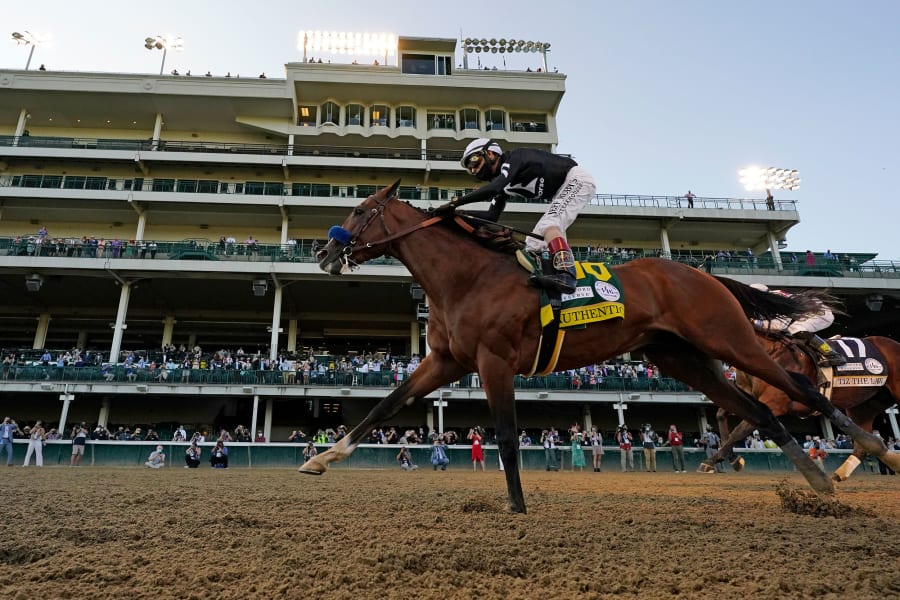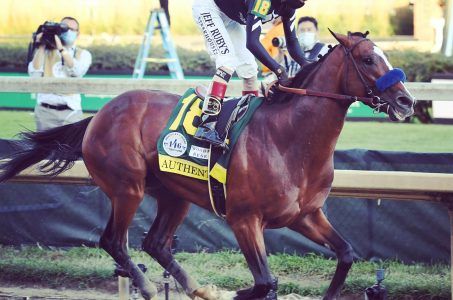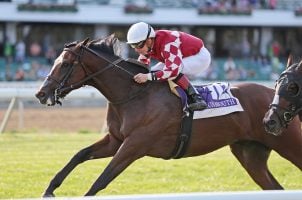2020 Horse Racing Handle Nearly on Par with 2019 Despite COVID, But Purses Fall Sharply
Posted on: January 11, 2021, 10:39h.
Last updated on: January 12, 2021, 09:16h.
Betting on US horse racing in 2020 nearly held its ground from 2019. But purses, thanks to the COVID-19 pandemic, took a major hit. That’s according to year-end data released by Equibase last week.

Bettors wagered more than $10.9 billion on thoroughbred races last year. That was down $108.6 million – or less than 1 percent – from the $11 billion gambled in 2019. The handle decrease was barely a blip, even though the number of races declined by 23.5 percent.
COVID had a unique impact on racing last year. Major tracks like Churchill Downs, Santa Anita, and Belmont Park lost racing dates because of the virus. In addition, all the Triple Crown races were forced to rearrange their schedules. That led officials at Churchill Downs to run the Kentucky Derby in September. In Maryland, Pimlico Race Course moved the Preakness Stakes to October.
All three Triple Crown races also were held without spectators. So, even though the majority of wagers on those races occur online, the lack of fans certainly had an impact, especially on the undercard races for those major racing days.
The handle for the Kentucky Derby’s full card was down nearly 50 percent. That $124.9 million drop off was greater than the year-to-year decline.
However, while major tracks found their race days cut, other tracks were actually able to expand their racing calendars. In March and April, as most US sports remained on hiatus because of the virus, bettors were able to wager on races at such tracks as Nebraska’s Fonner Park and Tampa Bay Downs in Florida.
In a statement, National Thoroughbred Racing Association President and CEO Alex Waldrop thanked the fans and the “essential participants on the backside and beyond” for their work in keeping the sport going during challenging times.
The horse racing community is extremely resilient, as borne out by the fact that despite the widespread and negative impacts of the coronavirus pandemic, pari-mutuel wagering on US races held steady,” he said.
The average amount wagered per race day was $3.3 million in 2020. That increased by nearly a third from the 2019 average of $2.5 million.
Less Money for Horsemen in 2020
That was the good news for racing. Here’s the bad news.
Fewer race days and races meant there was less money available for horsemen in 2020. Total purses for US races fell by nearly $300 million to $869.8 million. The 25.5 percent decline in purses was nearly identical to the percentage of lost race days (3,302 in 2020, compared to 4,425 in 2019).
COVID issues could potentially carry over into 2021 for racing, even if the country and the sport progress in the recovery.
Some racing states rely on gaming revenue from casinos, racinos, or historical horse racing parlors to supplement purses and make their races more attractive to owners and trainers. As many of those venues remain under COVID-19 restrictions that reduce the number of patrons and machines available, they may not be able to sweeten purses as they have in years past.
The unplanned dark days at several tracks led to substantially fewer horses in starting gates, too. Equibase reported slightly more than 220,000 starts in 2020, down from more than 272,500 in 2019. Thanks to a steeper decline in races, though, the average field size was nearly eight per race last year. That’s compared to 7.5 in 2019.
Trotters See Drops in Handle, Purses
Harness racing endured a bleaker 2020 as its handle dropped by 18.4 percent last year. According to the US Trotting Association, bettors wagered nearly $1.16 billion, down from $1.42 billion in 2019.
Industry officials, though, noted that from late March to June, all harness tracks were shut down, so it did not get the chance that horse racing had in the spring.
From June on, wagering actually increased by 6 percent, as compared to the same time period in 2019. Bettors put down $844.4 million on those races.
In addition, purses were also down. Harness horsemen competed for $304.1 million in money in 2020. That’s down 30.8 percent from $439.5 million in 2019.
Related News Articles
Monmouth Park Sees Handle Increase, CEO Dennis Drazin Pleased with Fixed-Odds Debut
South Carolina Horsemen Renew Calls for Betting Ahead of Aiken Steeplechase
Most Popular
VEGAS MYTHS BUSTED: Golden Gate is the Oldest Casino in Vegas
Las Vegas Overstated F1 Race’s Vegas Impact — Report
Most Commented
-
End of the Line for Las Vegas Monorail
— April 5, 2024 — 90 Comments -
Mega Millions Reportedly Mulling Substantial Ticket Price Increase
— April 16, 2024 — 6 Comments
















No comments yet